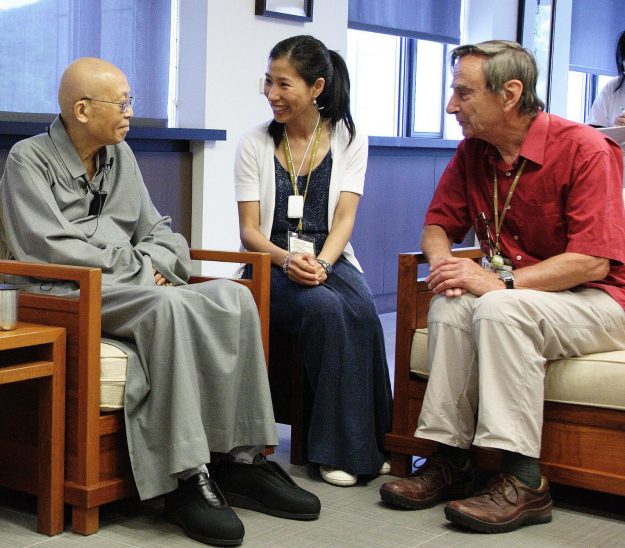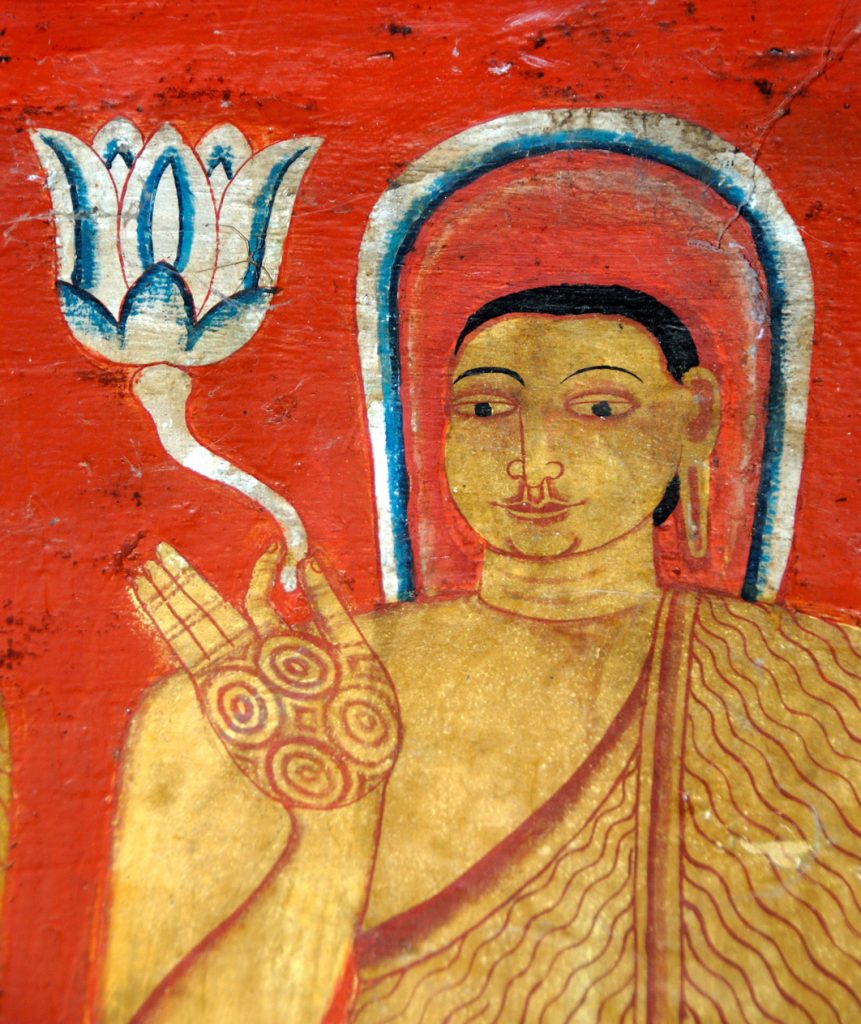When asked “What is the difference between Chinese and non-Chinese students?” my teacher Master Sheng Yen once replied, “When you tell Chinese people what to do, they do not challenge the teacher; they do what they are told.” This is the outcome of an ethos of Chinese society that emphasizes order and conformity; those who ask questions are often seen as troublemakers, even though all they want is to understand and learn. This is an element of much of Chinese culture and conditioning, and it shows up in all sorts of ways, including a susceptibility to strict regimes.
I grew up in Hong Kong, so of course I understood this, but because I was Western-educated—first in British schools and then at American universities—I also knew we each have our own minds and views and can each be our own person. Early in my practice, I wanted to know why and how meditation worked, and I had a lot of questions. After all, I was trained in science; I needed a verifiable explanation! That type of inquiry is not always encouraged in a Chinese environment. Even though I was completely committed to Master Sheng Yen as my teacher, there was a cultural barrier I couldn’t break through. Somewhere inside me, I was wondering if I had been going about meditation in the wrong way.
Although I’d been practicing meditation for about five years and had been “recruited” for and considered the monastic path on several occasions, I continued not to take this route. After careful consideration, I was certain I wanted to live in the world, work as a college professor, and get married—yet I still knew my calling was to share Chan teachings and the dharma. I was happy to help Master Sheng Yen offer Chan in the West by serving as his translator. That was my favorite task as a volunteer, and it was one of my life’s greatest blessings to help in that manner. Still, the question intrigued me: Could a layperson practice Chan well and share the dharma in a meaningful way? This was during the years before we would look up everything on the internet, and I was unaware of the many lay dharma teachers already teaching in the West.
I began to find my answers when I had an opportunity to meet John Crook, Master Sheng Yen’s first lay dharma heir, at a forty-nine-day retreat—seven weeks of intensive Chan practice led by Master Sheng Yen. It was very much like the intensives I’d attended at the Chan Center in the past, and I was serving as one of the translators. Six of Master Sheng Yen’s most experienced monastics traveled from Taiwan to assist him by conducting teaching interviews and supervising the meditation hall.
My experience shifted when John Crook joined us during the final week. He’d spent time in the Himalayas studying with Tibetan yogis and had devoted himself to the serious study of both Zen and Tibetan Buddhism for many years before training with Master Sheng Yen. Not only were John Crook and I both Westerners dedicated to the Chan path; we were also both trained in the sciences—his fields biology and psychology, mine sociology.
What really touched me was when I offered to explain to my fellow retreatants what the Chinese words in the texts meant so they could understand what we were reciting in the precepts ceremony where practitioners commit to the ethics of Buddhism. John Crook attended my class! Here was a contemporary of and dharma heir to my teacher and yet he came to learn from someone like me. I was moved by John Crook’s manner and how from that moment on he always took the time to give me space and to listen. He treated me as an equal, which wasn’t expected, especially when I was used to a more hierarchical environment.

A year after our first encounter, John Crook was invited to lead the Western Zen Retreat at Dharma Drum Retreat Center in New York. This was an innovation in Buddhist retreats, offering serious practice in a context more relatable for Westerners. In the traditional Chan retreats I attended during that time, the monastics discouraged asking a lot of questions. We were instructed to only ask questions related to meditation practice in face-to-face interviews with Master Sheng Yen. At this point I was doing fine in my sitting meditation, or so I thought. I had begun my practice using the method of counting the breath and moved on to working with the huatou (derived from a koan) method—using a question to focus the mind and reveal emptiness—but would not say that I actually got it. I was good at sitting still and being calm, so I didn’t have much to ask about meditation itself in the interviews, but I still had questions about suffering, how to penetrate what was going on in my mind, and most importantly, how meditation was supposed to help me with my life.
That is why there was a bigger piece to my encounter with John Crook than bridging the East-West chasm. It had to do with my meditation practice. Beginning with that first Western Zen Retreat, he showed me that what I had understood as silence was not silence. Silence does not mean to push away or avoid all noise; doing that is resisting the present moment and the joy and liberation it holds. Silence means to refrain from succumbing to our habitual reactivity that gets in the way of fully experiencing the present moment as it is. As Master Sheng Yen told John Crook, “Even under the Bodhi tree thought was present. The sutras show clearly that the Buddha was aware of his experiences in a way that could be expressed in thought.” It was during that retreat that the dharma teachings I learned began to make sense—when study and practice finally connected.
During my work with John in my first Western Zen Retreat, he made it explicit that instead of trying to let go of thought, stop thinking, or tell myself my thoughts are illusory, it was OK to pay attention to them. Thoughts are not the enemy; they are just thoughts. He helped me see how we, perhaps especially as Western-educated people, must make full contact with whatever shows up in the mind—all the thoughts and feelings, however intense or frightening they are—to fully appreciate how our minds are truly empty. It is not a matter of being in a removed position or being a detached observer for whom meditation becomes nothing more than labeling thoughts while still inhabiting a place of me versus everything else—othering, self-cherishing, reifying, and spiritual bypassing. Thanks to John, after years of trying to silence my mind and failing to gain insight, I was able to truly meditate for the first time—this was transformative.
Silence does not mean to push away or avoid all noise; doing that is resisting the present moment and the joy and liberation it holds.
In all my study of meditation I’d never heard anyone, even Master Sheng Yen, talk about thoughts in this way before. Having grown up in Hong Kong and practiced Buddhism in the United States, I am more a British-Chinese-American Buddhist than a Chinese one. Maybe there was something that “real” Chinese people understood in the nuances of the language and could get immediately from Master Sheng Yen’s teaching, but as a Westerner I’d been missing it. John Crook showed me that when it comes to Buddhism, there is much talk about emptiness, yet being willing to investigate our lives at an experiential level is an integral and often overlooked part of our practice.
It is what I now teach in retreats, because most people who are interested in meditation face challenges like mine. Connecting with the reality of emptiness, bridging the gap between concept and direct experience, can be tricky. What I do may be a little different from other students of Master Sheng Yen because I also trained with John Crook and later Simon Child, Master Sheng Yen’s second lay dharma heir, who first studied with John Crook. I am a fusion.
Since that first retreat with John many years ago, I’ve used what I learned from my teachers to help practitioners recognize how the earnest effort to block out thoughts obstructs them and causes suffering.
Seven years after Master Sheng Yen passed away, I received dharma transmission from his disciple—and my current teacher—Simon Child; I became a full heir in the Chan lineage. It is said that while speaking to a large gathering, Shakyamuni Buddha handed his disciple Mahakasyapa a single flower. He responded to the Buddha’s gesture with a subtle smile and in that moment received the first dharma transmission. Nobody in the crowd knew what was going on, and as they tried to deduce the meaning, Mahakasyapa remained fully present with the Buddha. In that interaction, according to Chan tradition, the Buddha and his disciple understood each other so perfectly that words were unnecessary.
Students, seekers, and scholars have analyzed the story of Mahakasyapa and the Buddha and imagined all the implications of how grasping at conceptual thought to understand the present moment is futile. Conceptual analysis distorts and obscures what enlightenment and dharma transmission are.
Enlightenment cannot be expressed in words or evaluated conceptually. Whenever we impose language or thought on an experience, feeling, or phenomenon, we are no longer entirely present. Whatever we are talking about is not exactly it. This is a truth many people find incredibly mysterious, and therefore the role of the Chan master is to validate and authenticate the enlightenment experience of their students. As Master Sheng Yen pointed out, only someone who has a verified enlightenment experience can confirm it in another. That is what is meant by mind-to-mind transmission in Chan.
Many people misunderstand dharma transmission as an accomplishment. They think it represents having achieved something or attained a status. That is not an accurate understanding. Master Sheng Yen described dharma heirs as those who have accepted a heavy responsibility to carry on the lineage—tasked with finding and training the next generation of lineage holders—as custodians of that continuous thread the Buddha passed to Mahakasyapa. A dharma heir must have a stable personality and correct understanding of the Buddhist teachings; they must have given rise to bodhi mind (compassion balanced with wisdom) and made a great vow to share the practice to benefit all sentient beings. Master Sheng Yen taught that lineage transmission means a commitment to making dharma practice the most important priority in life.
As John Crook showed me, there is a power in being an outsider. Although monasticism is a means of preserving the sanctity of the dharma, it is not a requirement; the beauty of Chan is that because it is a formless practice, I do not have to refrain from activities like maintaining close ties with family or pursuing a professional career. Living in the world, I have access to and understanding of challenges like emotional relationships, political divisiveness, sexuality, ambition, oppression, and money worries. As a lineage holder yet a lay teacher, my family and my job are not a distraction from practice but rather integral to it. Life does not get in the way; it is the way.
♦
Adapted from Illumination: A Guide to the Buddhist Method of No-Method by Rebecca Li © 2023 by Rebecca Li. Reprinted in arrangement with Shambhala Publications, Inc. Boulder, CO.
Thank you for subscribing to Tricycle! As a nonprofit, we depend on readers like you to keep Buddhist teachings and practices widely available.
